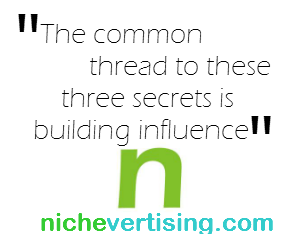 This weekend I had the pleasure of attending ProductCamp Atlanta 2013. As always, it was a fun day of learning and networking. I’ve attended 6 of the 7 ProductCamp’s held in Atlanta since it started back in 2009. However, this was the first time I attended as a full-time entrepreneur / digital marketing professional instead of a product manager / business analyst.
This weekend I had the pleasure of attending ProductCamp Atlanta 2013. As always, it was a fun day of learning and networking. I’ve attended 6 of the 7 ProductCamp’s held in Atlanta since it started back in 2009. However, this was the first time I attended as a full-time entrepreneur / digital marketing professional instead of a product manager / business analyst.
With that said, my focus this year was less on the product management side and more on the product marketing side. As a result, most of the sessions I attended were focused on marketing. I wasn’t disappointed either. There were some really good nuggets of marketing “how to” presented. This post contains the best of those nuggets, revealing 3 insider secrets on content marketing that (if applied) will push your product marketing efforts to the next level.
Secret 1: The Art of Repurposing Content
This first insider secret came from Kyle Porter, co-founder and CEO of SalesLoft.com. SalesLoft is an B2B sales intelligence software platform based in Atlanta, GA. SalesLoft also implements a masterful content marketing playbook orchestrated by its CEO Kyle Porter.
Kyle’s content marketing strategy focuses on developing a rhythm and cadence for the distribution of the SalesLoft content. To get an idea what he means by “rhythm and cadence” I recommend you take a look at his SlideShare presentation below:
Secret 2: Podcasting for Influential Prospects
This second content marketing secret came from Todd Schnick of Dreamland Radio. Todd revealed this secret by asking two piercing questions during his ProductCamp session:
1. What reaction do you think you will get from the CEO of one of your influential prospects if you request a sales meeting to present the benefits of your product or service?
2. What reaction do you think you will get if you reach out to request an interview for a popular podcast where they can market their products to an engaged audience of potential customers?
Question 1 will likely get you nowhere, question 2 at least has a 50/50 chance of working depending on how notable you make your podcast. Bottom line is that the work it takes to create a podcast is worth it’s weight in gold.
Todd Schnick explained this masterfully as he described all of the doors podcasting can open up for you. Not only can it help you get access to your highest value prospects, it can also help you get to know all of your industry’s influencers on a first name basis. This is priceless.
In addition, thinking back to secret 1 on repurposing content, podcasting is ripe for the picking. Todd explained that you can easily turn a podcast into a YouTube video, blogpost, infographic, tweets, Facebook post, etc.
In short, Podcasting is a content marketing goldmine.
Secret 3: Using Moderately Inactive LinkedIn Groups
This tip is my personal content marketing secret weapon. I revealed this during the session I presented. This tip didn’t came out during my actual presentation, but during the Q&A afterward. I was asked if and how I used LinkedIn for content marketing and boy did my face light up as I got ready to answer.
LinkedIn is now my favorite content marketing social network. Facebook and Twitter are extremely active and noisy, which means it’s tough to get your content to stand out. Linkedin on the other hand is fairly tame. I’ve found that if I share a quality piece of content on all three of the social networks mentioned, LinkedIn drives about 3x the clicks.
The secret is not to just share your content in your basic LinkedIn update stream, instead focus on finding a LinkedIn Group with the following characteristics:
- Closely related to your industry (obviously)
- A member base of at least 2,000 people
- Moderately Inactive
That’s right, moderately “inactive”…
Tip 3 is the key to driving traffic and building influence. There are some LinkedIn groups that are so active that 5 minutes after you post a new discussion topic your content is already halfway down the page, if not at the bottom. You should still post content to these groups, but don’t spend too much time on them.
The key is that LinkedIn sends out emails to all the members of a group with the latest posts. If you can find a large member base of moderately inactive people, everytime you post something to the group discussion board it will not only stay near the top for a day or two, it will also get featured in an email to the 2,000+ members of the group.
This is gold. The only better strategy is to create your own LinkedIn group and recruit 2,000 members to join. If you don’t have the time to do that then this is the next best thing.
The Common Thread
The common thread to these three secrets is building influence. As I stated in a previous blog post about how to market an event, influencing your industry’s influencers is hard. What better way to circumvent this process than to become an influencer yourself.
If you regularly use the content marketing secrets revealed in this post, I have not a doubt in my mind that within 24 months you will become one of your industry’s top influencers and your product marketing efforts will begin to run on cruise control.

There are 3 comments. Add yours.